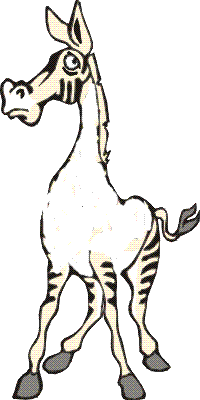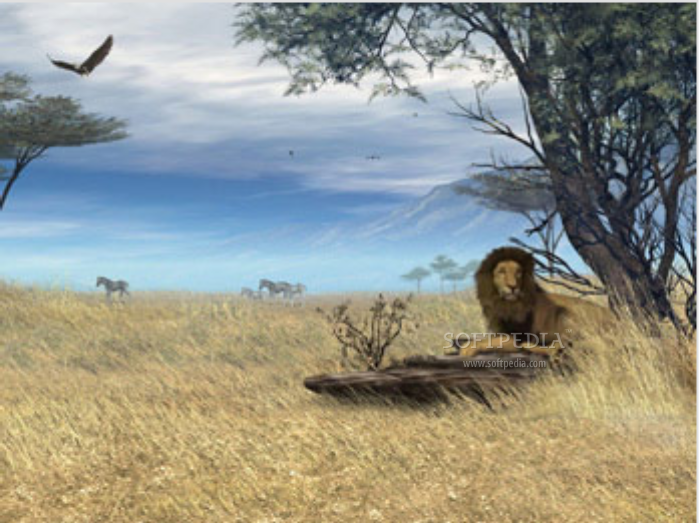Thursday 16 December 2010
Monday 6 December 2010
Animation Dialogue
Animation Dialogue:
The characters in this animation that will be saying something will be the stripe less zebra, the monkey king and the leader of the zebra pack. There will not be a great amount of speech, however we will have a narration over the top of the piece, as well as music.
The slight dialogue that will occur in this opening sequence is as follows:
*starting narration about the location and the situation*
The jungle is a big place, and there are many animals that live inside it, a few of these are giraffes, lions and zebra's. In this pack of zebra's, one of them gets bullied because he looks different.
The zebra's are in their pack and the stripe less zebra is slightly outside.
Zebra pack: *laughs and sniggers towards the zebra that is alone*
Narration: The other zebra's do not like the zebra Stripes because he looked different and was just plain white. Whenever they go anywhere, they go as a pack but he is always outcasted and stuck at the end, even when they all come together as a kingdom they do not include him in their group.
When the scene has changed to when the whole kingdom has gathered:
Monkey king: *in a strong, orderly tone of voice* Karni, you and your zebra's need to have this rock moved immediately.
Narration: After the struggle the zebra's are facing moving the rock, they decide to head back to their king and tell him of their struggle. What they don't know is that the zebra they had all doubted, was actually the strongest and whilst they are all gone, he completes the task for them.
The characters in this animation that will be saying something will be the stripe less zebra, the monkey king and the leader of the zebra pack. There will not be a great amount of speech, however we will have a narration over the top of the piece, as well as music.
The slight dialogue that will occur in this opening sequence is as follows:
*starting narration about the location and the situation*
The jungle is a big place, and there are many animals that live inside it, a few of these are giraffes, lions and zebra's. In this pack of zebra's, one of them gets bullied because he looks different.
The zebra's are in their pack and the stripe less zebra is slightly outside.
Zebra pack: *laughs and sniggers towards the zebra that is alone*
Narration: The other zebra's do not like the zebra Stripes because he looked different and was just plain white. Whenever they go anywhere, they go as a pack but he is always outcasted and stuck at the end, even when they all come together as a kingdom they do not include him in their group.
When the scene has changed to when the whole kingdom has gathered:
Monkey king: *in a strong, orderly tone of voice* Karni, you and your zebra's need to have this rock moved immediately.
Narration: After the struggle the zebra's are facing moving the rock, they decide to head back to their king and tell him of their struggle. What they don't know is that the zebra they had all doubted, was actually the strongest and whilst they are all gone, he completes the task for them.
Labels:
Hayley Moore,
Mustapha Amimu-Kano,
Ollie Montique
Soundtrack Plan
Our initial ideas for the soundtrack incorporated both diegetic, naturalistic sound relevant or associative with our setting of the savanna grasslands. As well as this, in order to engage children we must ensure we incorporate non-diegetic sounds which are reflective of the moods or emotions evident in the content of our film. For example, as the bright and vibrant location is introduced through our establishing shot, uplifting music is reflected in our soundtrack. Another example of our reflective soundtrack is the empathetic sounds as our main character is ignored and undermined by fellow characters.
Creating Our Soundtrack
In using garage band we can use a variety of different sounds to effectively create a relevant soundtrack. As well as the added sounds from different instruments or genres available on garage band, we intended to compile voiceovers for our characters using ourselves as the voices. Whilst getting the balance of sounds correct is difficult and time consuming it is a vital part of our film as it evokes certain emotions as well as entertains our viewers.
Creating Our Soundtrack
In using garage band we can use a variety of different sounds to effectively create a relevant soundtrack. As well as the added sounds from different instruments or genres available on garage band, we intended to compile voiceovers for our characters using ourselves as the voices. Whilst getting the balance of sounds correct is difficult and time consuming it is a vital part of our film as it evokes certain emotions as well as entertains our viewers.
Labels:
Hayley Moore,
Mustapha Amimu-Kano,
Ollie Montique
Wednesday 1 December 2010
Plan For Children's Film.
Animation:
Although time consuming and particuarly difficult we have decided that an animated piece is the best way to emphasis our morales as well as be an entertaining and engaging opening for children. In order to ensure this we must accurately reflect the location of the Savanna as well as the conventional characters. As well as this we must show our main character and his particular differences which enforces the theme of equaliy.
Location:
The savanna grasslands, with emphasis on bright colours, naturalistic sounds mixed with non-diagetic sounds and conveying the hiuge range of different animals.
Acting:
Although our film is animated and therefore there is no need for acting, we must use voice overs from ourselves to represent the particular characters.
Although time consuming and particuarly difficult we have decided that an animated piece is the best way to emphasis our morales as well as be an entertaining and engaging opening for children. In order to ensure this we must accurately reflect the location of the Savanna as well as the conventional characters. As well as this we must show our main character and his particular differences which enforces the theme of equaliy.
Location:
The savanna grasslands, with emphasis on bright colours, naturalistic sounds mixed with non-diagetic sounds and conveying the hiuge range of different animals.
Acting:
Although our film is animated and therefore there is no need for acting, we must use voice overs from ourselves to represent the particular characters.
Labels:
Hayley Moore,
Mustapha Amimu-Kano,
Ollie Montique
12Q1 10- Analysis.
In short, the opening sequence encorperates all the conventional elements of a childrens film opening sequence effectively, with ranging shot types, speed of editing and camera angles. The sound is applicable for children using both diagetic and non-diagetic sound. Wg=hilst the aspects could appeal to a large demographic, specifically the content and other aspects of the opening sequence target females, this is reflected in the predominantly female cast with an aray of colouyrs that you would conevntionally conote with young girls such as bright pinks and blues.
http://10longroadchildrensfilm10.blogspot.com/2010/11/childrens-film-task.html
http://10longroadchildrensfilm10.blogspot.com/2010/11/childrens-film-task.html
Labels:
Hayley Moore,
Mustapha Amimu-Kano,
Ollie Montique
Chicken Run
Chicken Run
1. Who do you think the different target audience could be and why?
The Primary audience for the film is certainly children aged between 5-10, however the comedic aspects as well as references to the ‘ Great Escape’ create a much wider demographic in terms of age. Whereas the animation and slapstick comedy featured in the film appeals directly to children, the film incorporates aspects such as the fantasy of breaking away to freedom in order to reach a larger target audience which it successfully does.
2. Would you class this as a children’s film? Why?
Overall I would class it as a children’s film as it is primarily aimed at children however to entirely label it as a children’s film would be incorrect as the other aspects of the film are applicable to a wider audience. We can see how the film is mostly targeted towards children by analyzing the micro elements used. For example the vivid colors in the mise-en-scene are designed to appeal to children.
3. Research the institutional information for ‘Chicken Run’ and the inspiration behind it.
Chicken Run was released in 2000 and is a stop-motion animation created by Aardman Productions. The plot regards a group of chickens under the control of the Tweedy’s who keep them in restricted conditions and constantly attempt to develop new ways to make money out of the chickens. The focus of the film is the chicken’s attempts at escaping with the help of an American Rooster. However, it is the links to ‘The Great Escape’ that inspired the film such as escaping from capture and this is reflected in the target demographic.
Labels:
Hayley Moore,
Mustapha Amimu-Kano,
Ollie Montique
Research & Planning
We have decided upon themes, settings, locations and characters for our childrens film which will promote the idea of equality in an applicable and enjoyable way for children to comprehend. In doing this we must ensure that our mise-en-scene is firstly an accurate relection of the location which is the savanna grasslands. Furthermore, we must ensure that our characters are well illustrated and detailed. Our film is an animation therefore we must incorperate aspects of the location into our illustrations. In order to understand and develop ideas we will conduct research of appropriate costumes and props for the mise-en-scene of our opening sequence.These will include bright and colourful props in order to keep childeren interested and engaged.
 |
| As the main character in our opening sequence is not your typical Zebra, we must show the conventional Zebra in the natural surroundings yet enhance these in order to engage children. |
Labels:
Hayley Moore,
Mustapha Amimu-Kano,
Ollie Montique
Subscribe to:
Posts (Atom)

